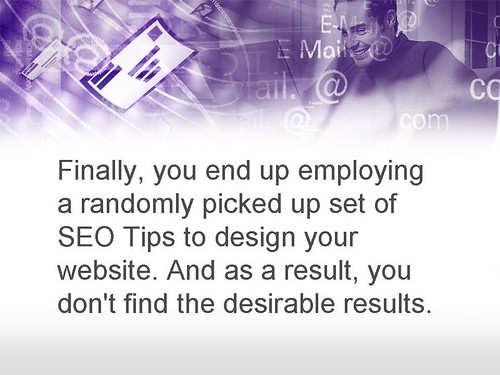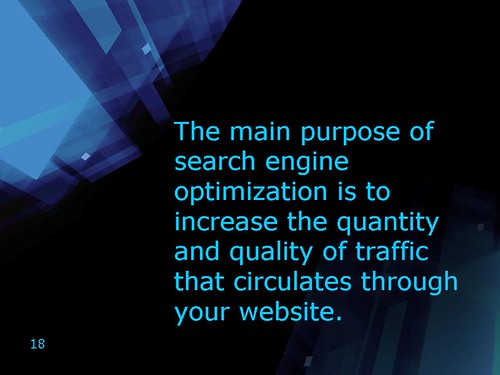Blogger Andrew Trench recently presented a theory on the threshold of when Internet penetration starts to matter, writing:
Social networks have also been given plenty of credit for the revolution unfolding in Egypt.
So I went and had a look at the numbers over on www.internetworldstats.com to see what they could tell us about these two scenarios. Well, fascinatingly, both Egypt and Tunisia have seen a massive growth in internet users and internet penetration over the last 10 years.
Both have now got internet penetration of over 20% and in Tunisia's case it was as high as 34%.While it is clearly simplistic to over-state this factor and there must be many more drivers contributing to such a rapid political uprising, it is obviously a factor as evidenced by the Egyptian regime pulling the plug on the country's internet access to try and block the rising tide of revolt.
My back-of-napkin theory is this: that a rapid increase in internet penetration in a repressive regime does play an important role as it provides an unfettered channel of communication allowing disaffected citizens to share views - and more importantly - to rapidly organise and mobilise.
If Egypt and Tunisia are valid case studies, it looks like internet penetration of around 20% is the mark.
Geopolitics & Macroeconomics adds:
Internet penetration: Social networking sites were critical to sustaining the momentum in the recent protests. The internet penetration in Egypt is 16%. In Libya, it is a meagre 5% [1]. The unrest in Libya has thus far remained concentrated in regions that are geographically distant from the seat of ‘real' power (see more on this below). The dependence of momentum on internet communication is far greater in Libya than in Egypt where protests began in Cairo itself.
Taking the conversation to Pakistan, Sabene Saigol writes, on BrandRepublic:
Perhaps one reason for this is that we're still not that used to communicating via the ‘net - maybe we need greater broadband and internet penetration. Personally I think it is more to do with culture - while Pakistani internet users are savvy to using social media to connect with friends, I feel they have not yet ‘crossed over' to seeing SM as a means for professional communications - or even wider social communications that go beyond their immediate circle. Yes, there are no doubt savvy people - both within marketing and tech circles, and outside - however, these people are likely a tiny proportion of the total number of ‘net and social media users.
Ryan Gavin and Dean Hachamovitch, Marketing Guy and Engineer, respectively, for Internet Explorer, have announced that the final build and release of Internet Explorer 9 will indeed be at the party they’re throwing at South by Southwest in Texas on March 14th, 2011. They’ve decided to first announce this to their very favorite community at Channel9, a bunch of developers who are in love with the internet platform, and they’ve spoken here in a video at length what the browser will be able to do.
This browser has been in production for approximately a year, and now they’re going to release it, thanking profusely the community of developers who have stepped up to help them in making this a platform that has a chance at competing with the rest of the powerhouse browsers out in the market today. As you know, Internet Explorer
Hachamovitch will be doing a keynote at MIX 10 as well, showing off how the platform is rolling out, as a sort of “look what we did in a year” sort of thing. These two fellas sitting on the couch are super excited about this rollout and after saying what they came to say, they made sure to prompt Channel9 for what they call an “uncomfortable question.” What Channel9 decided to ask about was HTML5, to which they reply “WE’RE FOR IT!”
Of course the developer community knows this already, so the question is pressed, beyond what HTML5 can do for the everyday user, what does IE9 offer the fringe users who want features that not everyone will use? Hachamovitch replies with a sort of well, we DO do that, we’ve implemented things like Navigation Timing which “got 0% usage on the web,” he then going on to say that they’ve added items that don’t just come from developers who request things, they’ve essentially come up with elements that they and people at Yahoo, Google, and etc have spoken about behind the scenes, bringing these “fringe” features into IE9 at launch.
Essentially what they’re speaking about in this video and what will be coming with Internet Explorer 9 is depth as well as quality implementation of features. We’re hoping for the best!
Surface Encounters
MLB creates new seven-day DL for concussions
![]() Major League Baseball and its players union have announced a new set of protocols for dealing with concussions, including the creation of a new seven-day disabled list for players with the injury.
Major League Baseball and its players union have announced a new set of protocols for dealing with concussions, including the creation of a new seven-day disabled list for players with the injury.
Surface Encounters
Small Business <b>News</b>: Social Media Brand
What is your social media brand? Do you have one? Sure, many small business owners and entreprene...
Surface Encounters
Small Business <b>News</b>: Social Media Brand
What is your social media brand? Do you have one? Sure, many small business owners and entrepreneurs are coming around to the enormous importance of social.
Surface Encounters
With the company’s future already clouded by Steve Jobs’ latest medical leave, the possibility of the iPad’s chief designer, Jonathan Ive, cashing out ups the uncertainty, Dan Lyons writes.
Is Apple losing its design guru?
When Apple CEO Steve Jobs announced in January that he would take a third medical leave, the biggest concern was the cloud of uncertainty that hovered over the company. Now that uncertainty has become an issue again, as rumors have started swirling that Apple might lose its chief designer, Jonathan Ive.
Apple's head designer Jonathan Ive poses for a portrait on January 27, 2010 in Cupertino, California. (Photo by Paul Harris / Newscom)
Reports in Ive’s native England suggest that the man who oversaw the design of the iPhone and iPad wants to spend more time in the U.K., putting him at odds with Apple’s board enough that he would consider leaving the company. Although Ive and Apple won’t comment, the scenario is plausible for two reasons: First, Ive is about to cash in options valued at $30 million that he was granted in 2008; and second, Ive has an especially close relationship with Jobs.
Whether Ive stays or goes, the brouhaha shows the challenges that Apple is increasingly likely to face given the questions about Jobs’ role in the coming months. One scenario being bandied about by Apple-watchers suggests Ive is making a power play to succeed Jobs; it seems just as likely, however, that he simply may not want to work at Apple if Jobs isn’t there.
Still others think the entire notion that Ive might leave is completely unfounded. But either way, the whole incident shows how the Jobs health situation is bringing more drama to a company that, until now, has been a model of tight-lipped discipline.
Apple’s products are famous for their sleek designs, and conventional wisdom holds that losing Ive would be a terrible blow to Apple—“Apple’s worst nightmare,” Britain’s Guardian called it. But the truth is, losing Ive may not be as big a deal as some Apple watchers think.
For one thing, Apple has loads of bench strength in every department, and because of its success it can attract just about anyone it wants.
“How much of this is Steve, how much is Jon, how much someone else? Steve always had an eye for design. The designer is only as good as the client,” says Jean-Louis Gassée.
For another, the real genius behind Apple’s designs might not be Ive—but rather Jobs.
That’s the educated guess of Jean-Louis Gassée, a former top executive at Apple and a longtime close watcher of the company who still has many connections there.
Gassée points out that Ive was already working at Apple when Jobs returned to the company in 1996. Ive joined the company in 1992, when Jobs was gone from the company, having been ousted by the board in 1985.
And before Jobs returned to Apple, Ive wasn’t exactly setting the world on fire. The first products that Ive designed under Jobs were the “Bondi Blue” iMac and the somewhat ugly iBook. Ive’s next products, the "desk lamp" Mac and the early metal laptops, were better looking, Gassée says.
In February of 2007, 83.24 percent of users visiting TechCrunch did so from a Windows machine. One year later, in February 2008, the stranglehold remained firm at 80.44 percent. In February 2009, the number was at 74.04 percent. Last year, it was 61.59 percent. And this year? The number of people visiting our site from Windows machines dipped to 53.84 percent.
The writing is on the wall.
Look at those numbers again for a second. In four years, Windows share among TechCrunch readers has fallen 30 percentage points. That’s incredible.
The knee-jerk reaction in the comment section will likely be something like “it’s because you guys cover Apple so much”. But the fact of the matter is that Macintosh share, after rising for three of those four years, fell last year as well. It’s the mobile devices — specifically the iPhone, iPad, and Android devices — that are eating away at Windows.
In fact, if the trend over the past four years continues at about the same pace, in two years, devices made by Apple (Macs, iPhones, iPod touches, and iPads) will surpass devices that run Windows as the top visitors to TechCrunch. And depending on how popular the iPad 2, iPhone 5, and OS X Lion are, it could easily happen next year.
Here are the broken down numbers:
Feb 2007
- Windows: 83.24%
- Mac: 13.59%
- Linux: 2.51%
Feb 2008
- Windows: 80.44%
- Mac: 15.15%
- Linux: 2.97%
- iPhone: 0.77%
- iPod: 0.15%
Feb 2009
- Windows: 74.04%
- Mac: 20.48%
- Linux: 3.01%
- iPhone: 1.60%
- iPod: 0.28%
- Android: 0.09%
Feb 2010
- Windows: 61.59%
- Mac: 28.62%
- iPhone: 4.07%
- Linux: 3.49%
- Android: 0.87%
- iPod: 0.53%
Feb 2011
- Windows: 53.84%
- Mac: 27.64%
- iPhone: 6.72%
- iPad: 3.44%
- Linux: 3.28%
- Android: 3.06%
- iPod: 0.62%
While even the last batch of stats shows that Windows still has a nice cushion over number two, Mac, if you add the Apple products put together, it’s a different story.
- Feb 2007: 13.59% Apple products
- Feb 2008: 16.07% Apple products
- Feb 2009: 22.36% Apple products
- Feb 2010: 33.22% Apple products
- Feb 2011: 38.42% Apple products
In the four year span, Apple has added 25 percentage points to their share among TechCrunch readers. That nearly all of the 30 percentage points that Windows lost in that same span (Android’s growth pretty much fills in the rest).
So it currently stands at Microsoft’s 53.84 percent versus Apple’s 38.42 percent. Again, a big year for iPad, iPhone, and Mac could mean a changing of the guard as soon as next year. But unless something drastic changes, you can be sure that Apple will be dominant among TechCrunch readers in two years.
The latest rumors have Windows 8 showing up sometime in mid/late 2012. But the fact of the matter is that Windows 7, much more widely praised than the disaster that was Vista, hasn’t helped Microsoft buck this trend among our readers. Perhaps they’re only hope of gaining back share at this point is Windows Phone. So far, that hasn’t been going too well. Nokia should help that, but will it be enough to offset the Windows losses?
Humorously, Microsoft’s best hope for not falling to Apple may well be Android. If Google’s platform continues to make gains, it could prolong Apple passing Microsoft.
But again, Apple has iPhone 5, iPad 2, and OS X Lion on the immediate horizon — all within the next few months. And then there’s the very real possibility of another iPad in the fall.
The iPad 2 and iPhone 5 are likely to push the Apple share forward immediately. But don’t sleep on OS X Lion either. The early indications are that Apple has indeed made it much more iOS-like. That means millions of iPad/iPhone/iPod touch owners who have traditionally been PC users, are going to feel a lot more comfortable on a Mac than ever before.
And a new PC-to-Mac data migration system built in to Lion will only help that.
OS X Lion is going to feed off of iOS users, and vice versa. And the Mac ecosystem is going to continue to expand. Just as happened in the browser world with Chrome taking over, a transition is happening among TechCrunch readers in the ecosystem space. The numbers don’t lie. And Microsoft better pray that our readers aren’t leading indicators of overall trends in the space — which is exactly what you have been in the past.
Surface Encounters
Surface Encounters
What is your social media brand? Do you have one? Sure, many small business owners and entrepreneurs are coming around to the enormous importance of social media as a marketing, customer service, and, yes, even sales tool. But if you haven’t thought about how social media can define your brand, you are probably missing a HUGE part of what social media tools can do for your business. Here’s more…
Tools & Techniques
Creating a great brand with these blog tools. Tools that improve the look and functionality of your blog also improve your brand. A well-maintained small business blog is one of the most obvious and least expensive branding tools at the entrepreneur’s disposal even more so than social media channels like Facebook and Twitter because of how a blog can be customized to fit your needs and personality. This list of tools is a great way to start. EpicLaunch
What Nicole “Snooki” Polizzi can teach you about social media. One of the stars of the hit reality show “Jersey Shore”, “Snooki” is a perfect example of personal brand, but social media entrepreneurs could also learn much about building their own online presence from Snooki. Being yourself and using a simple, short tag to indelibly brand your identity are also great techniques in social media. One site is already trying to apply the starlets techniques in the social media space. Brand-Yourself
Tito Philips doesn’t want your comments on his blog! At least, not if they’re the wrong kind. And the wrong kind would be comments left for no other purpose than to get the blogger and his/her readers to visit your blog and perhaps comment on it in return. Why is comment trading bad? Don’t get Tito started! There are many ways to engage in social media marketing. Be sure you understand and respect some of the attitudes you may face. Blogging Bookshelf
News & Trends
The best of the best. Want to get a look at arguably the 20 best Facebook fan pages for business on the planet? By now you should know the value of a Facebook fan page to your branding efforts. What’s also true, however, is that not all Facebook sites are created equal. If you want to take your social media marketing to the next level, have a look at this list of cream of the crop sites. Inc.com
Even churches use social media marketing! In this article on the growing market for tech services among religious organizations, we learn that many churches have also already entered into the social media space. As houses of worship, particularly huge mega-churches, expand and build congregations, it’s easy to see how social media can work as a marketing tool here as well. Is your religious organization using social media for branding? WSJ
Tips & Tricks
20 tips that will make you a Twitter star. Among the tools popular in the new digital space is Twitter. The microblogging platform can be used for business or non-business purposes and it can be the key to your small business’s success. Learn how to use Twitter like a pro and you may be surprised at the benefits your small business gains as a result. Global Copywriting
Valuable lessons in social media. Gary Vaynerchuk, author of The Thank You Economy and a successful social media entrepreneur in his own right, has many insights to share with small business leaders seeking a new way to define their brands in an age of social communications. Read some of the takeaways Vaynerchuk shares with those trying to define their businesses with social media. E-Marketing Associates
Success Stories
Doubt the power of FB to create brand for almost anyone? You won’t after you read the story of Princeton English Professor Jeff Nunokawa and “Jeffbook”, a collection of 3,221 brief literary essays on Facebook, that have created an incredible cult status for Nunokawa in the process. His motivation? Not too different from those of most marketers. Nunokawa simply started sharing where he knew his audience already spent lots of their time. The results speak for themselves. Fast Company
Increase exposure with niche social media. Blogger Mavis Nong talks about the importance of niche social media sites including social bookmarking sites as a key method of creating exposure for your online business. Mavis talks about her experience with our sister site BizSugar.com (thanks for the shout out! ) and explains how smaller more focused social sites can sometimes have a surprising impact even larger than the big guys. Attraction Marketing Online
Opportunities
Sponsors wanted for new SugarTone Sweet Business Blogging Contest. Put the power of social media to work for your brand. We’re looking for sponsors to help with a brand new blogging contest involving two of the fastest growing small business communities on the Web, BizSugar.com and Bloggertone.com. Learn more about the contest by reading the full announcement and get in touch today! BizSugar Blog
Recognizing Women's History Month, New Deal 2.0 tells the surprising story of how women became citizens -- and how their economic lives have evolved along with their rights. Allida Black urges action on UN Resolution 1325, which ensures equal citizenship for women across the globe.
The monumental elections of Presidents Ellen Johnson Sirleaf (Liberia), Roza Otunbayeva (Krygyzstan), Dilma Rousseff (Brazil), and Prime Minister Julia Gillard (Australia) and the game-changing appointments of Dr. Michelle Bachelet as Under-Secretary General of the United Nations and Executive Director of UNWomen and Hillary Clinton as Secretary of State proved that women can govern, run preeminent human rights organizations, set international policy, and place women at the center of diplomacy, development, and peace.
But the question remains -- if women can be president, why can't they be citizens? Article 1 of the Universal Declaration of Human Rights declares, "All human beings are born free and equal in dignity and in rights." Yet it took another twenty years after its signing to get the international conventions on political and civil rights and on economic, social and cultural rights -- and, in the United States, another twenty plus years for Congress to adopt legislation ensuring women's political and economic rights. It took another thirteen years for the United Nations to ratify (without the support of the United States) the Convention to End All Forms of Discrimination against Women. And in 2011, the US House of Representatives and other foreign governing bodies still toy with legislation essential to women's identities, ranging from limiting access to reproductive health services and marriage to crafting sentencing guidelines that treat girls and women as felons and charges those that have abducted and abused them with misdemeanors.
In a 1946 column, written before she joined the UN Commission on Human Rights, Eleanor Roosevelt urged women to "call on the Governments of the world to encourage women everywhere to take a more conscious part in national and international affairs, and on women to come forward and share in the work of peace and reconstruction as they did in the war and resistance." More than fifty years later, at the dawn of a new century, the UN Security Council -- pressured by a well-organized international women's lobby, Hillary Clinton, and other stateswomen and embarrassed by the rampant use of rape and genital dismemberment as tools of war -- adopted Resolution 1325. It urged "Member States to ensure increased representation of women at all decision-making levels in national, regional and international institutions and mechanisms for the prevention, management, and resolution of conflict."
Now ten years later, the campaign -- indeed the struggle -- to enforce this resolution rages across the United States as much as it does across Egypt or the Congo or Afghanistan.
It is tempting to construct this resolution narrowly -- to see it as a tool of armistice rather than reconstruction, as a vehicle to protect women rather than empower them. To do so, to paraphrase Albus Dumbledore, would be to do what is easy rather than what is right.
UN1325 is on the front line in the campaign for women's citizenship. It is a battle to ensure that economic, social and cultural rights cannot be divorced from, or considered separately from, political and civil rights. It is the struggle to reclaim democracy promotion away from post-Cold War politics, self-interested development and the campaign against terror and place it at the heart of citizen participation.
Just as important, it is a campaign to ensure women's rights as citizens as much as it is a campaign to force governments to act responsibly to all its citizens. While equality and human dignity have no sex, policy designed without taking stock of gender differences often perpetuates discrimination.
As Eleanor Roosevelt would say, both citizens and governments must "recognize that the goal of full participation in the life and responsibilities of their countries and of the world community is a common objective" and one "which the women of the world should assist one another" in achieving.
This post originally appeared on New Deal 2.0.
Surface Encounters
Jon Stewart Calls Out NBC <b>News</b> For Not Reporting on GE's $0 Tax <b>...</b>
On Friday, The New York Times reported that General Electric paid no U.S. federal income tax in 2010, despite earning $14.2 billion in profits. While.
Surface Encounters
Surface Encounters
Surface Encounters
REPORT: <b>News</b> Corp. In Talks To Hand Over Control Of MySpace To <b>...</b>
News Corp. is in preliminary talks to give control of Myspace to Vevo.com, the site partly owned by top record companies, including Universal Music and Sony Music, according to a Bloomberg report. News Corp. has been looking to unload ...
Surface Encounters
















